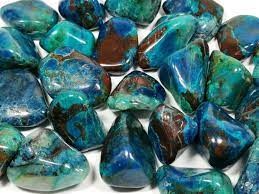
Chrysocolla is a long treasured and highly varied beauty. For this copper derived crystal enhances peace, harmony and communication and is found in alluring mixed shades of green, blue, and blue-green with brown or black veining. In fact, among several Chrysocolla pieces in my own collection, not a one of them looks anything like another.
Chrysocolla’s mixed bag of coloring is a result of being infused with fellow copper derived minerals such as Turquoise, Malachite, or Azurite. Turquoise will cause blue-green specimens, Malachite will cause more green specimens, and Azurite will cause more blue specimens.
Moreover, this stone’s affordability and similar hues make it “the poor man’s Turquoise.” For its blue-green pieces are often mistaken for the more expensive Turquoise.
Chrysocolla’s Mineralogy
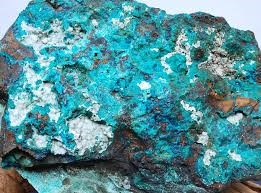
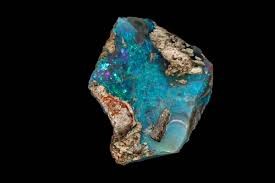
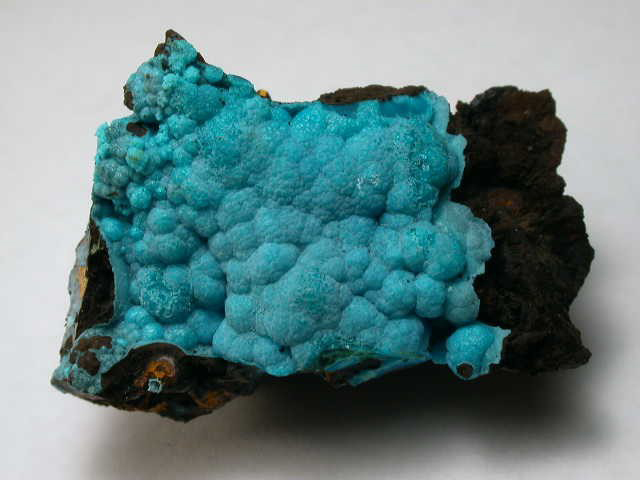
Chrysocolla is an opaque phyllosilicate mineral of the orthorhombic crystal class with a vitreous luster. And with its Moh’s hardness of only 2-4, it would be too unstable for cutting, tumbling, and polishing without the inclusion of other harder minerals.
Chrysocolla veins are mostly found in existing commercial copper mines. And these deposits are found in many countries i.e., Peru, Chile, Mexico, Israel, Morocco, Africa, Australia, and across the U.S. Southwest.
Types of Chrysocolla
- Malachite Chrysocolla – is Chrysocolla that has a strong Malachite infusion to the point that green circular Malachite patterns are visible.
- Azurite Chrysocolla – is Chrysocolla that has strong Azurite inclusions appearing as bright azure blue patches.
- Eilat Stone – is a mixture of Chrysocolla, Turquoise, and Malachite resulting in a blue-green version found in southern Israeli mines. Eilat, named for the southern Israeli city, is rare and known as the “King Solomon Stone” and Israel’s national stone.
- Apache Chrysocolla -is a mixture of Chrysocolla, Lapis, Malachite, Quartz, and Red Jasper which results in reddish brown patches.
- Parrot Wing – is a mixture of Chrysocolla, Azurite, and Red Jasper resulting in blue-green with reddish-brown patches. These specimens can have tropical like coloring of yellow and lime green similar to an actual Parrot wing.
Chrysocolla’s Illustrious History
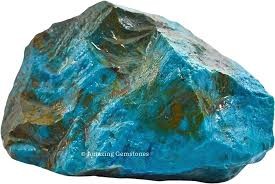
Chrysocolla’s name comes from the Greek words “chrysos” meaning “gold” and kola meaning “glue.” For ground Chrysocolla was used as a solder ingredient to weld gold pieces together.
Notably, Chrysocolla has enjoyed firm standing among the most beloved stones of the royalty of ancient civilizations. As it increased King Solomon’s riches and its crushed powder shadowed Cleopatra’s infamous eyelids. And Roman Emperor Nero is rumored to have spread Chrysocolla powder across the great Colosseum floor prior to chariot races.
Moreover, Chrysocolla’s powdered form was used in pigments for stunning Renaissance paintings.
Although known as a stone of wisdom in ancient times, Chrysocolla is today known as a stone of peace, harmony, and communication.
Buyer Beware of Imitation Chrysocolla
Altered Natural Chrysocolla
Inferiorly colored natural Chrysocolla is sometimes dyed to appear to be AAA color quality. Additionally, there are quite a few reconstituted specimens on the market. These are comprised of powdered Chrysocolla from many small bits that has been formed into solid polished pieces, cabochons, or beads.
Faked Chrysocolla
Unfortunately, Chrysocolla has been outright faked by manufacturers by creating glass and resin pieces. The presence of air bubbles and/or a translucence (Chrysocolla is opaque) are “tells” of a faked specimen. Another tell is if the color is too consistent. For authentic Chrysocolla contains varied coloring with random streaks and veining from inclusions of other minerals it grows with.
Finally, veined white stones, such as Howlite and Kunzite, may be dyed and passed off as Chrysocolla. These may be harder to spot because, unlike glass and resin, they have the weight of a real stone.
The best way to ensure you are buying authentic Chrysocolla, is to know your retailer. Ask people you trust for referrals of reputable vendors and check out the vendors’ online reviews.
Healing Effects of Chrysocolla on the Mind-Body-Spirit
Mental/Emotional Effects of Chrysocolla
Chrysocolla soothes emotional stress and habitual overthinking turning our thoughts to peace and relaxation promoting a sense of joy.
Moreover, Chrysocolla has a strong effect on the Throat Chakra thus enhancing self-expression both verbal and written.
Furthermore, Chrysocolla’s peaceful and harmonious energy gives one’s communications a diplomatic flavor giving conflicting opinions equal respect and understanding. Consequently, this stone would be helpful to use when moderating groups with strongly opposing viewpoints.
Physical Effects of Chrysocolla
Chrysocolla strengthens the immune system and helps with all throat related issues such as, inflammation, infection, soreness, and hoarseness. Additionally, Chrysocolla helps with mouth sores and fever blisters.
Moreover, Chrysocolla’s Throat Chakra connection makes it a good adjunct tool to use while engaging in sound healing.
And though unrelated to the throat, Chrysocolla also helps with carpal tunnel syndrome and tennis elbow.
Spiritual Effects of Chrysocolla
Since Chrysocolla is copper derived it has a strong connection to Mother Earth and thus a grounding effect. By being well grounded one can safely explore higher states of consciousness and integrate resulting spiritual experience into the physical. This is important for spiritual experience that can’t inform our physical life has no usefulness in our current incarnation.
Uses of Chrysocolla
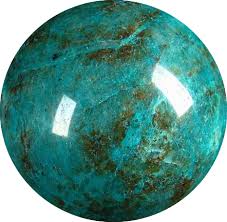
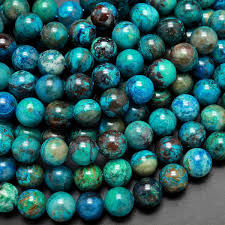
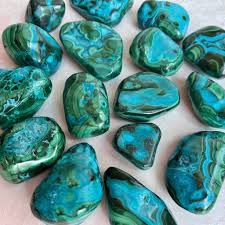
Jewelry
Chrysocolla pieces set in silver in the form of pendants, earrings, pendants, bracelets, and beads make beautiful fashion statements. Moreover, Chrysocolla jewelry items are easily found and more affordable than are pieces made solely of Turquoise, Malachite, or Azurite.
Objects of Decor
Chrysocolla carved objects such as balls, obelisks, pyramids, etc. can be used to beautify the home and altar. Additionally, these items emit a calming energy that soothes relationship upsets within the home.
Spiritual Practice
Chrysocolla can be used in spiritual practices such as engaging in communication with one’s Spirit Guides, Ascended Masters, and deceased loved ones. For this stone provides an atmosphere for clear loving messages to be sent and received by all communicators.
Final Words for Chrysocolla – A Highly Varied Beauty
Personally, I have an affinity for Chrysocolla in all its varied forms. Consequently, I’m a delighted owner of several Chrysocolla pendants that I have made into necklaces with matching beads. And since all of these pendants look completely different, I enjoy wearing them often. I hope this post inspires you to seek out your own Chrysocolla specimens. For I know you will cherish them as much as I do mine.
FYI: If you are interested in becoming a certified Crystal Therapist see my Crystal Therapist Certification Home Study Course on my energy healing school website Reiki Essence Institute.
Leave a Reply